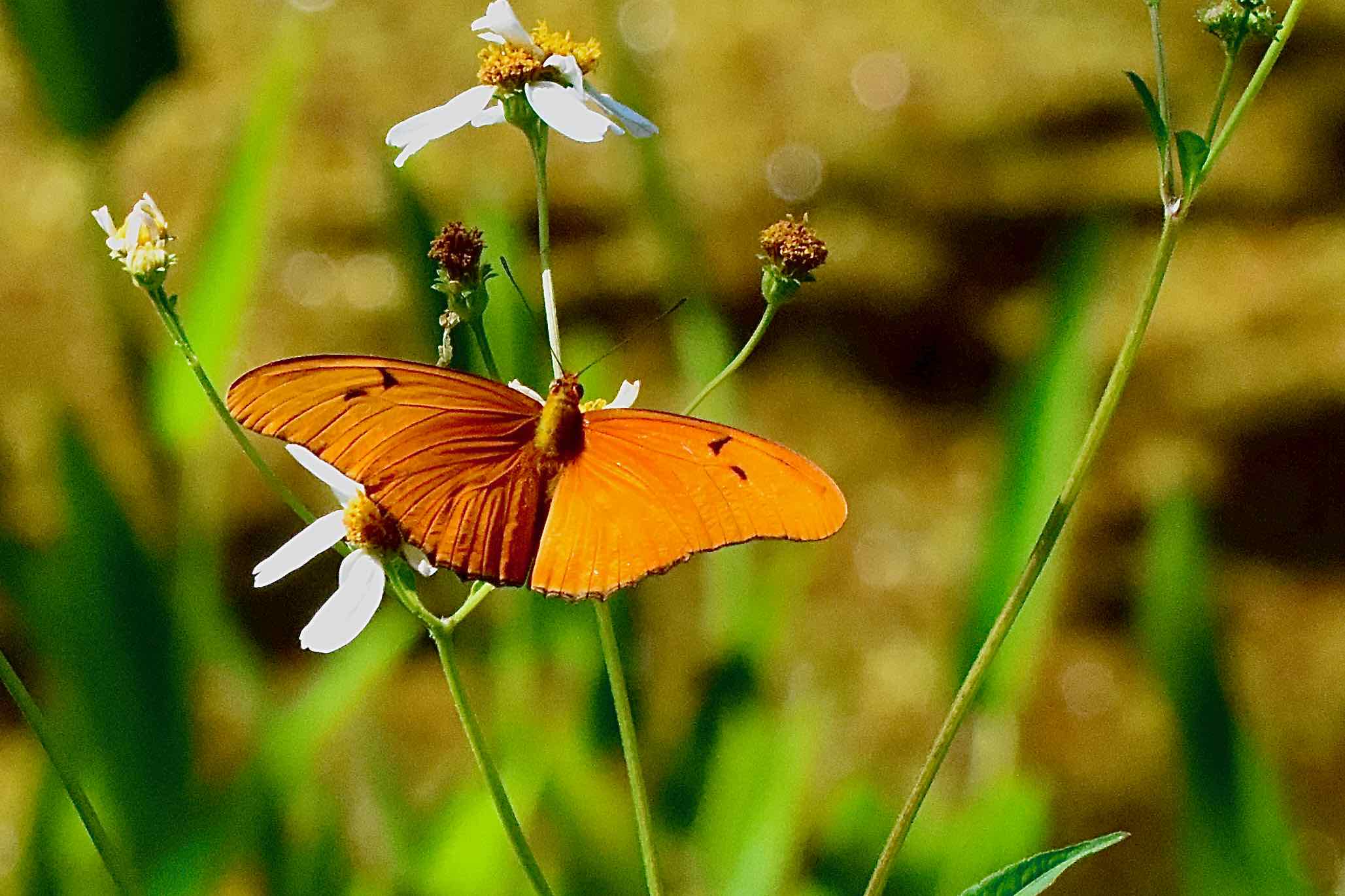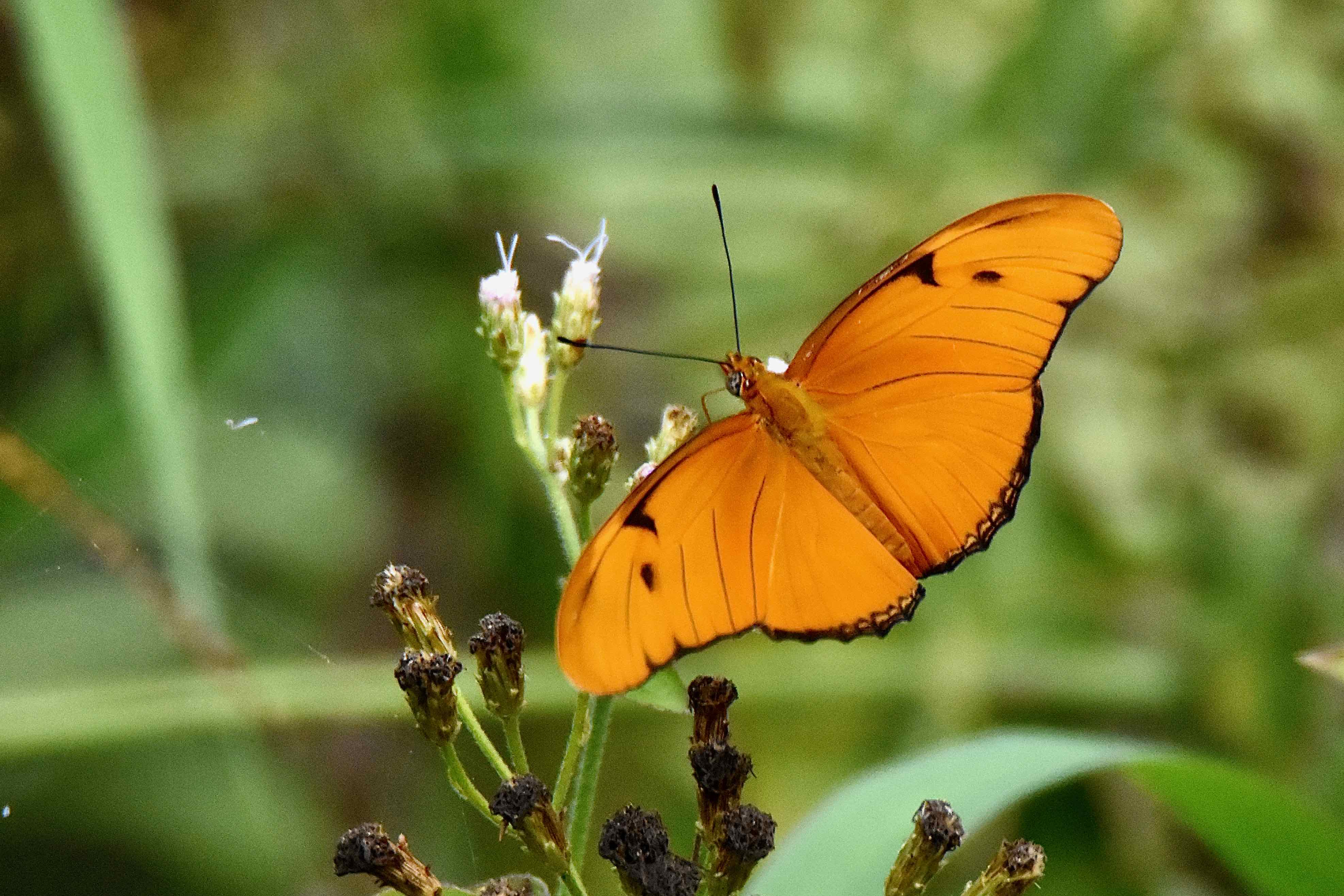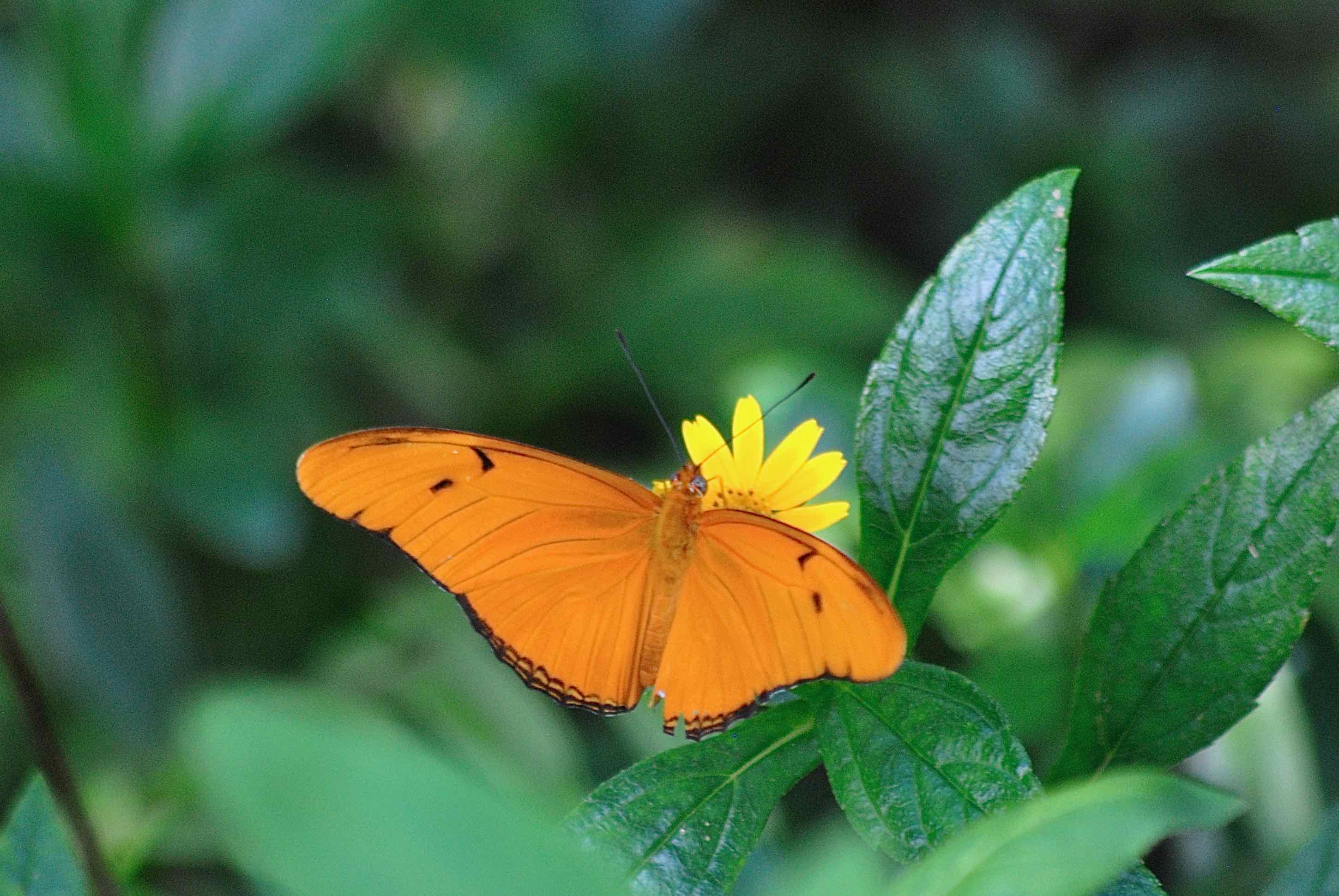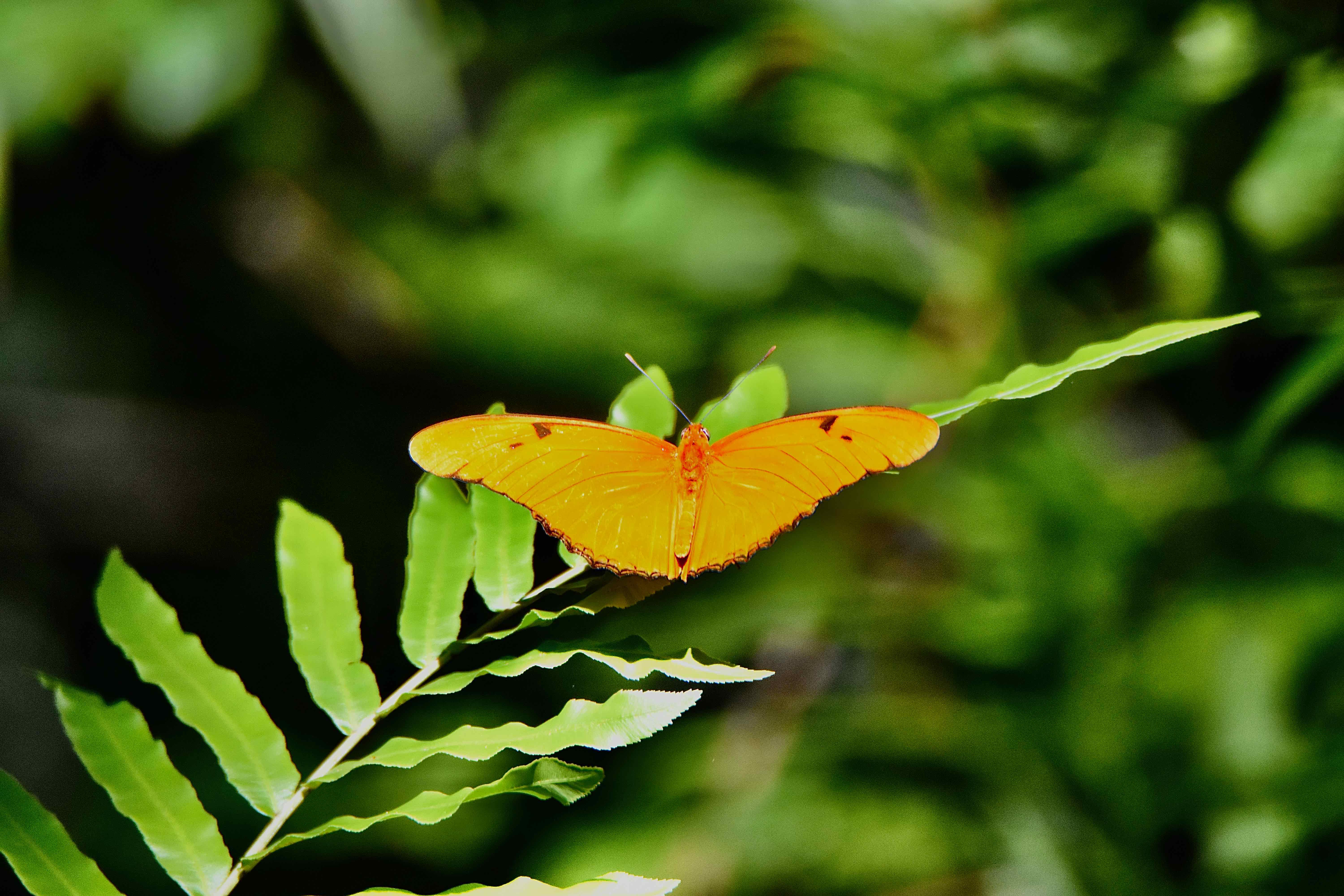
Julia butterfly, photographed at Loxahatchee National Wildlife Refuge, Boynton Beach, Palm Beach County, in January 2018.
Some call this bright orange butterfly "the flame," and it's easy to see why. Most call it Julia, or Julia heliconian. In any case, it's Dryas iulia, scientifically speaking.
It's a fairly large butterfly, and a common sight in South Florida foraging for nectar along the edges of woods, in fields and openings within hammocks. Its wingspan can exceed 3.5 inches.
Julias have elongated wings, similar to Florida's state butterfly, the zebra longwing, also called by some the zebra heliconian. Both in fact are members of the same subfamily, Heliconius.
Males are bright orange above and below, and have a narrow black band along the outer edges of their wings; females are duller and tend to have more black markings on the upper side of their wings.
The guys spend their time patrolling for dates — receptive females, who will lay eggs singly on new growth of the species's favorite host plants — passion vines. Julias are active year round throughout their normal range.
Julia adults have a wider list of flowers from which they like to nectar. The list includes lantana and Spanish needles aka shepherd's needles, as shown in the photo above, and creeping oxeye as shown in the middle photo below. It travels the same routes daily to forage for nectar, a process called trap-lining.
South Texas and the Florida peninsula are the northern limits of Julia's normal range, although they will wander occasionally to higher latitudes, as far north as Nebraska, during the warmer months. Brazil, Central America and Mexico are also part of its range, as is the Caribbean.
The Julia is a practioner of Batesian micmicry. Because it is bright orange, predators, mainly birds, associate it with a group of poisonous butterflies that includes the monarch, which are also bright orange. If a bird eats a monarch or similar-looking species they'll get deathly ill but usually will survive the experience and learn not to eat anything orange. One dies, allowing others to live, in other words.
Julias themselves are not poisonous — as caterpillars, they eat passion vine, like their cousin, the zebra longwing, instead of the milkweed leaves that make monarchs et al toxic — but benefit from color association with other butterflies that are toxic. That's called Batesian mimicry.
So what's in the Julia's scientific name? Dryas stems from Dryad, a nymph in Greek mythology that inhabits a forest or tree. Iulia is a feminine name originating in Roman times. So basically, you've got a nymph named Iulia, or Julia. Heliconian? From Mount Helicon, which, according to Greek mythology, is said to be the home of Apollo and the muses. Certainly a fitting name for such a beautiful butterfly
Julia heliconian is a member of Nymphalidae, the brushfoot family.
Arthur R. Marshall Loxahatchee National Wildlife Refuge



